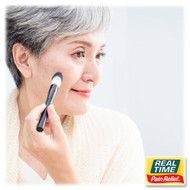Coloring Within the Lines: Navigating Sensitivities to Artificial Colors in Skincare Products
29th Feb 2024
Introduction:
The world of skincare is vibrant, with products often boasting an array of colors to entice consumers. However, for some individuals, the use of artificial colors in skincare products raises concerns. Sensitivities or allergies to synthetic colorants have prompted a closer look at the ingredients lists, as some consumers seek products that prioritize natural hues or are entirely free of artificial colors. This article delves into the world of artificial colors in skincare and explores the considerations for those with sensitivities.
Understanding Artificial Colors:
Artificial colors, often listed as colorants or dyes, are synthetic additives used to enhance the visual appeal of skincare and cosmetic products. These colors serve various purposes, from making products visually appealing to helping consumers differentiate between different formulations. However, for some individuals, the vibrant hues in their skincare routine can trigger skin sensitivities or allergic reactions.
Concerns about Sensitivities:
Skin sensitivities to artificial colors can manifest in various ways, including redness, itching, and irritation. Some individuals may be more prone to allergic reactions, prompting discomfort or even more severe skin issues. Recognizing the potential for adverse reactions, consumers with sensitivities or allergies often seek skincare products that are free from synthetic colorants.
Common Synthetic Colorants:
- FD&C (Food, Drug & Cosmetic) Colors: These are synthetic colorants approved for use in food, drugs, and cosmetics. Examples include FD&C Red No. 40, FD&C Blue No. 1, and FD&C Yellow No. 5.
- D&C (Drug & Cosmetic) Colors: Similar to FD&C colors, these are synthetic colorants permitted in drugs and cosmetics. Common examples include D&C Red No. 33 and D&C Green No. 5.
- Lake Colors: These are pigments formed by combining dyes with salts, creating insoluble compounds. They are commonly used in cosmetics, including skincare products.
Choosing Products Without Artificial Colors:
For individuals seeking skincare products without artificial colors, it's crucial to carefully read product labels. Products labeled as "dye-free," "colorant-free," or "no synthetic colors" cater to those looking to avoid these additives. Additionally, brands focusing on natural and clean formulations often steer clear of artificial colors, offering alternatives for consumers with sensitivities.
Benefits of Avoiding Artificial Colors:
- Reduced Risk of Allergic Reactions: Steering clear of synthetic colorants can lower the risk of allergic reactions and sensitivities, promoting a more comfortable skincare experience.
- Gentler Formulations: Products without artificial colors may be formulated with a focus on gentle, skin-friendly ingredients, making them suitable for individuals with sensitive skin.
- Natural Alternatives: Brands committed to avoiding synthetic colorants often use natural alternatives, such as botanical extracts, to add color to their products.
Conclusion:
The desire for healthy and irritation-free skincare has led some individuals to scrutinize product labels for artificial colors. Sensitivities or allergies to synthetic colorants prompt a shift toward products that prioritize natural hues or are entirely free of artificial colors. By understanding common synthetic colorants, reading labels, and exploring products labeled as dye-free or colorant-free, consumers can curate a skincare routine that aligns with their sensitivities and preferences. As awareness grows, brands are responding by formulating products that cater to those seeking a more natural and gentle approach to skincare.
Resources/References:
- FDA. "Color Additives Permitted for Use in Cosmetics."
[https://www.fda.gov/cosmetics/cosmetic-ingredients/color-additives-permitted-use-cosmetics] - Cosmetic Ingredient Review. "Final Report on the Safety Assessment of D&C Red No. 33."
[http://www.cir-safety.org/sites/default/files/PR-466.pdf] - Dermatitis. "Contact allergy to cosmetic ingredients: analysis of 3327 patients from the IVDK."
[https://pubmed.ncbi.nlm.nih.gov/26992584/] - American Academy of Dermatology. "Allergic contact dermatitis: Triggers and treatment."
[https://www.aad.org/public/diseases/rashes/contact-dermatitis]





